On March 6, 1968, in preparation for the first Apollo Moon landing, the first Mobile Quarantine Facility (MQF) arrived at the Manned Spacecraft Center (MSC), now NASA’s Johnson Space Center in Houston, for testing and evaluation. The MQF formed an essential part of a comprehensive postflight quarantine program for Apollo astronauts returning from the Moon, by providing biological isolation from splashdown until their return to MSC. Following delivery and initial checkout at MSC, the MQF embarked on sea trials and a dry run that included transport by aircraft. Lessons learned from the sea trials resulted in improvements to the MQF. In 1969, three other MQFs joined the first, with the crews of Apollo 11, 12, and 14 using them after splashdown as part of their immediate postflight quarantine.
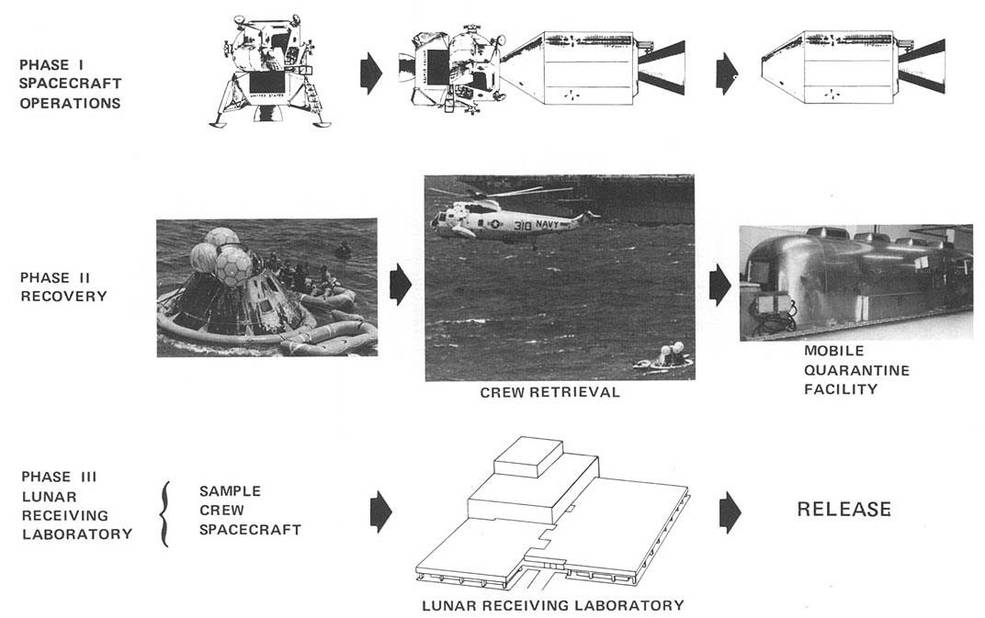
The overall process for the prevention of back-contamination of Earth with any possible lunar micro-organisms, showing the role of the Mobile Quarantine Facility in transporting crew from the recovery ship to the Lunar Receiving Laboratory in Houston.
In 1964, the National Academy of Sciences recommended that NASA institute a quarantine program for astronauts and their samples returning from lunar landing missions. While most scientists considered the risk of back contamination of Earth with any possible lunar micro-organisms remote, contemporary scientific knowledge could not rule it out. The quarantine program would also protect the lunar samples from any contamination by terrestrial organisms, allowing scientists to examine them in as pristine a condition as possible. An Interagency Committee on Back Contamination (ICBC), comprising several federal agencies involved in protecting public health, was formed in 1966 to oversee the plans for contamination prevention. The ICBC and NASA reached an agreement that the MQF would transport returning crews from the prime recovery ship to the Lunar Receiving Laboratory (LRL), then under construction in MSC’s Building 37.
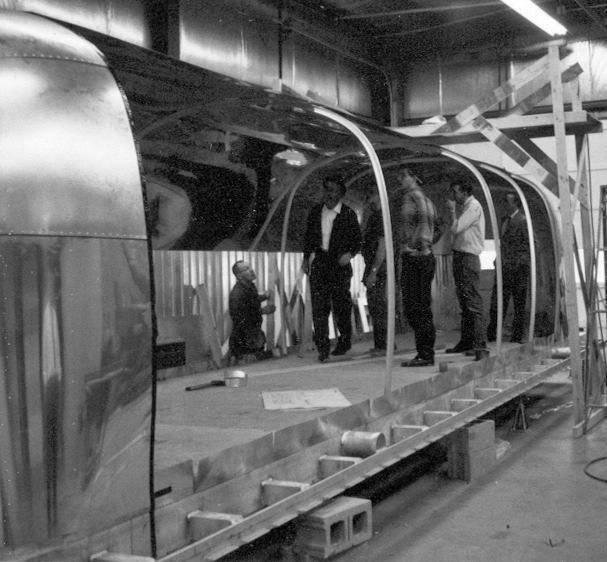
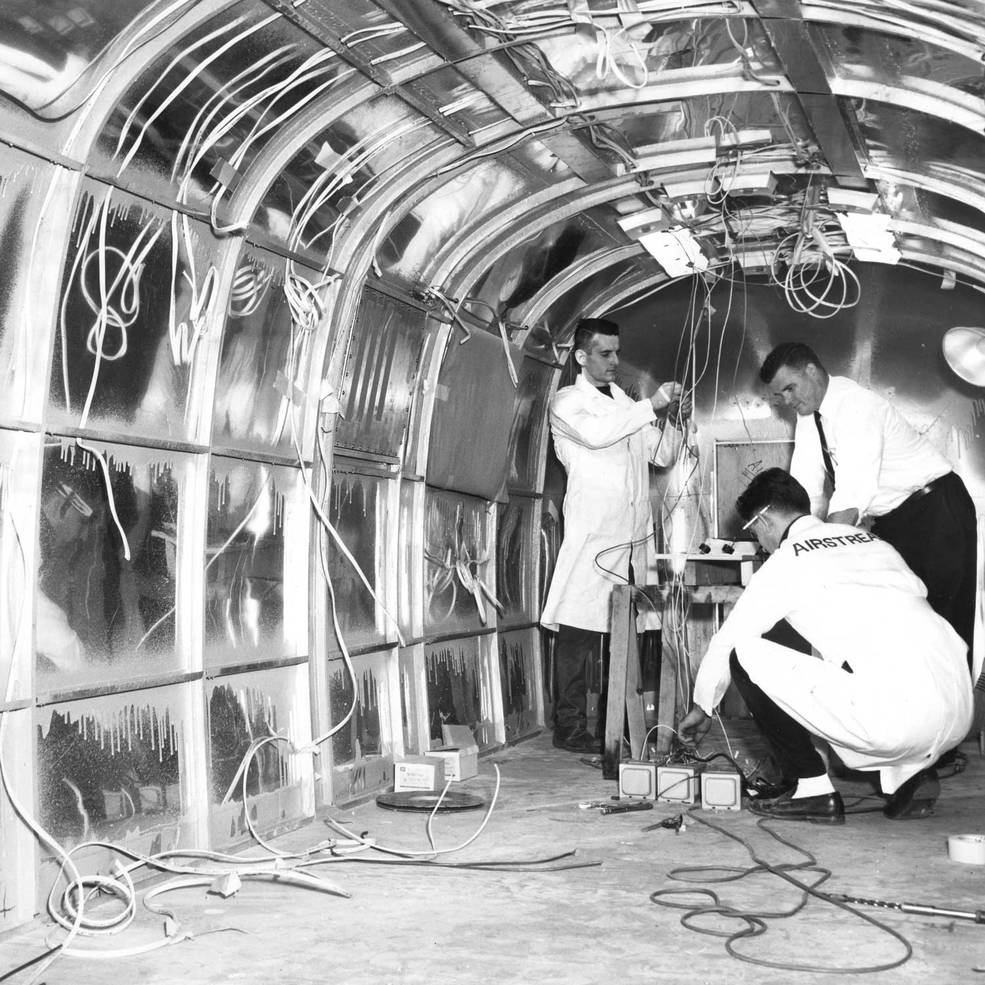
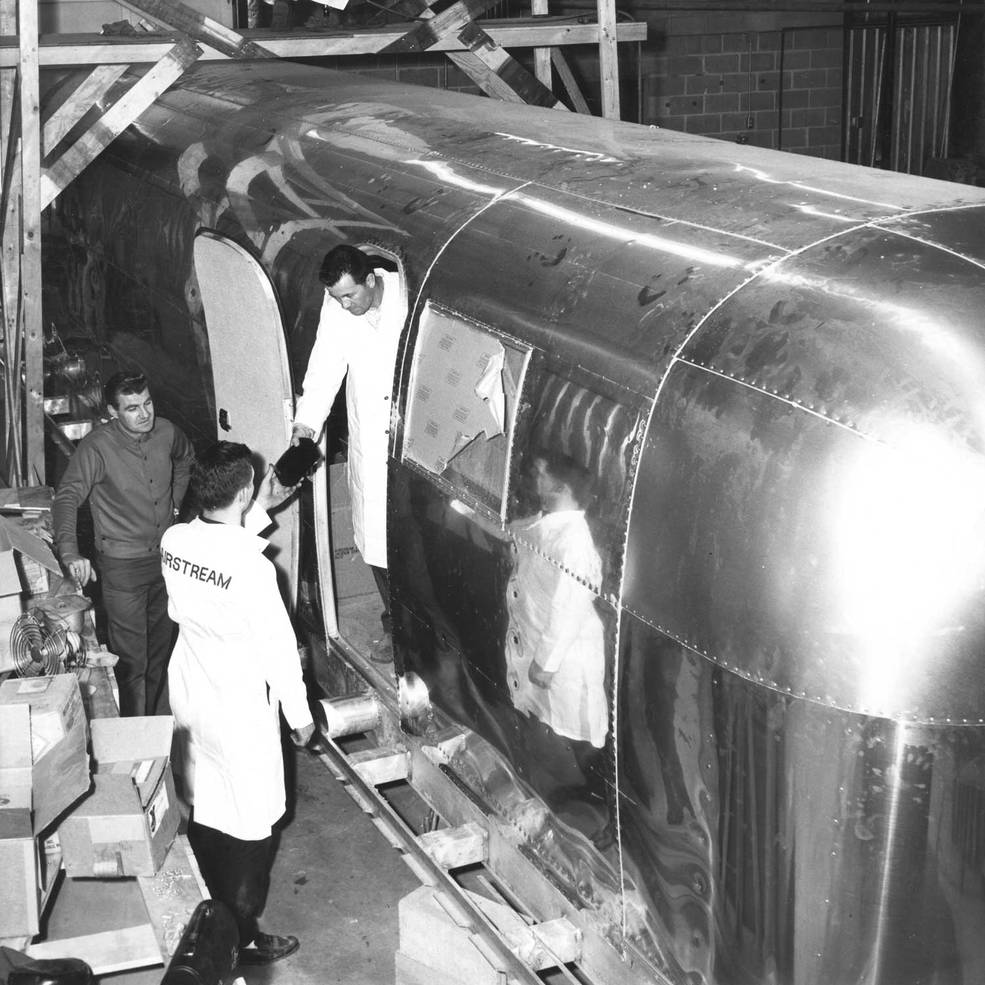
Three views of the first Mobile Quarantine Facility under construction at Airstream’s Jackson Center, Ohio, plant.
Image credits: courtesy The Airstream Company.
The Landing and Recovery Division at MSC managed the project to design and build the MQF. In June 1967, NASA awarded a contract to Melpar, Inc., of Falls Church, Virginia, to build four MQFs and supporting hardware, such as a collapsible tunnel to connect the MQF to an Apollo Command Module (CM) to enable transfer of items such as the Moon rocks and biological samples without breaking the isolation barrier. Melpar in turn let a subcontract to the Airstream Company of Jackson Center, Ohio, to highly modify 35-foot Airstream trailers to meet the MQF quarantine requirements by providing self-contained accommodations and biological isolation for six people for up to 10 days. The sealed aluminum body shell made it airtight, and the ventilation system provided negative pressure for biological isolation.
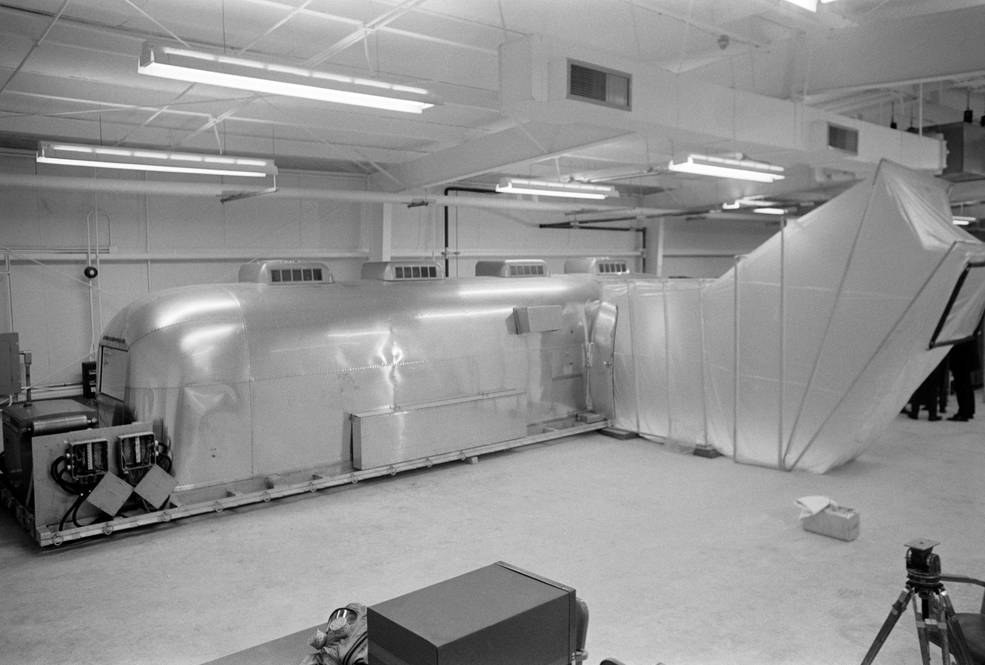
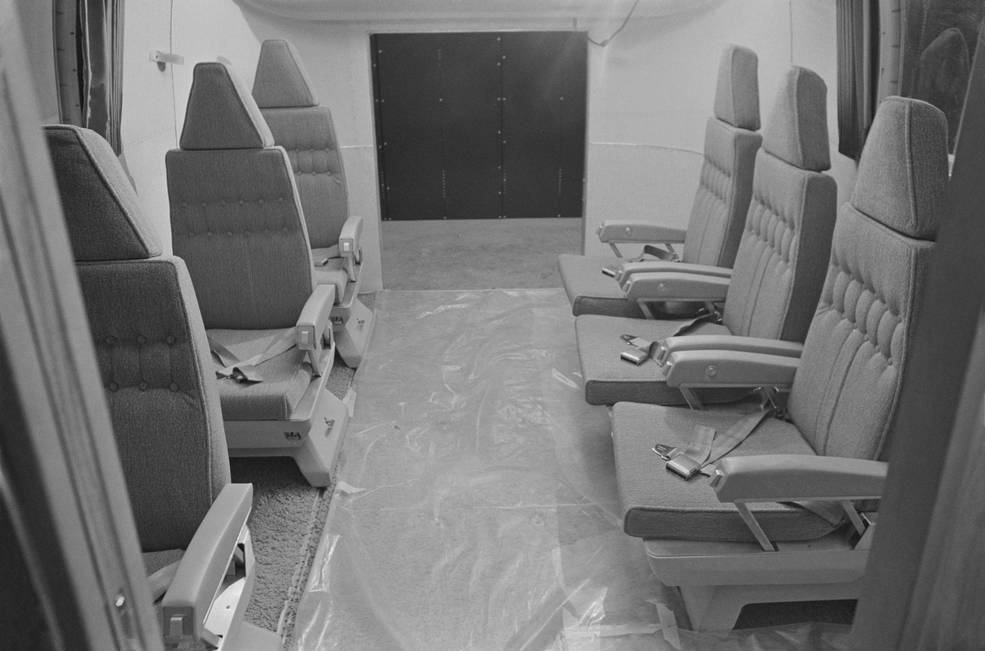
Left: Exterior view of the Mobile Quarantine Facility (MQF), with the transfer tunnel to the Apollo Command Module (not shown) installed at right. Right: Interior view of the MQF’s lounge area.
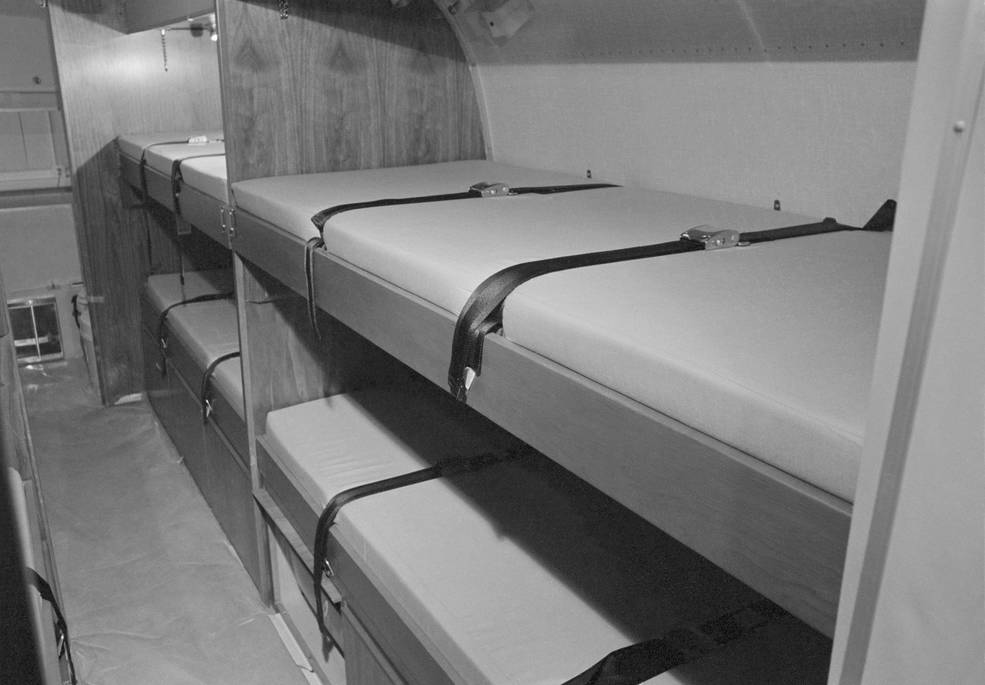
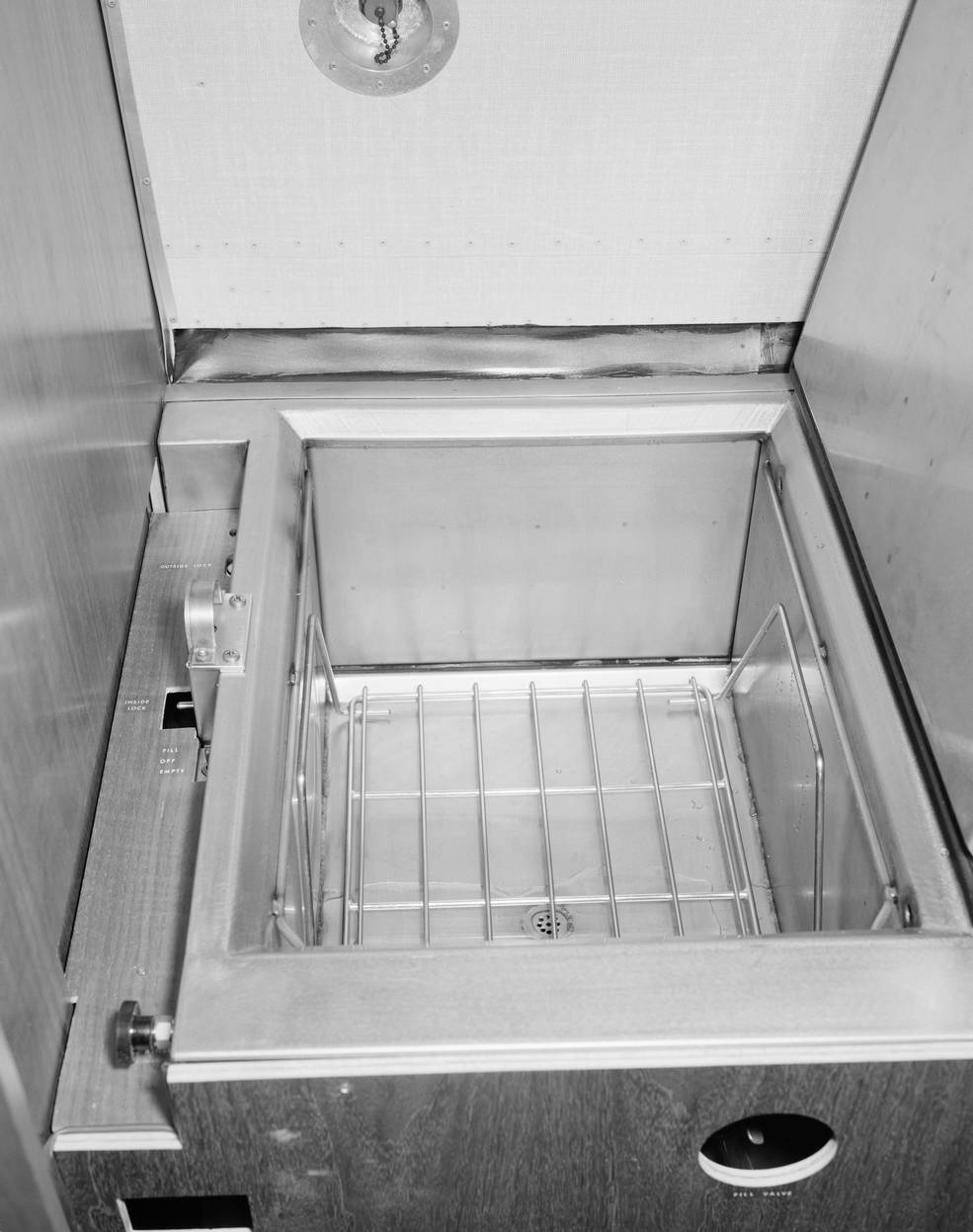
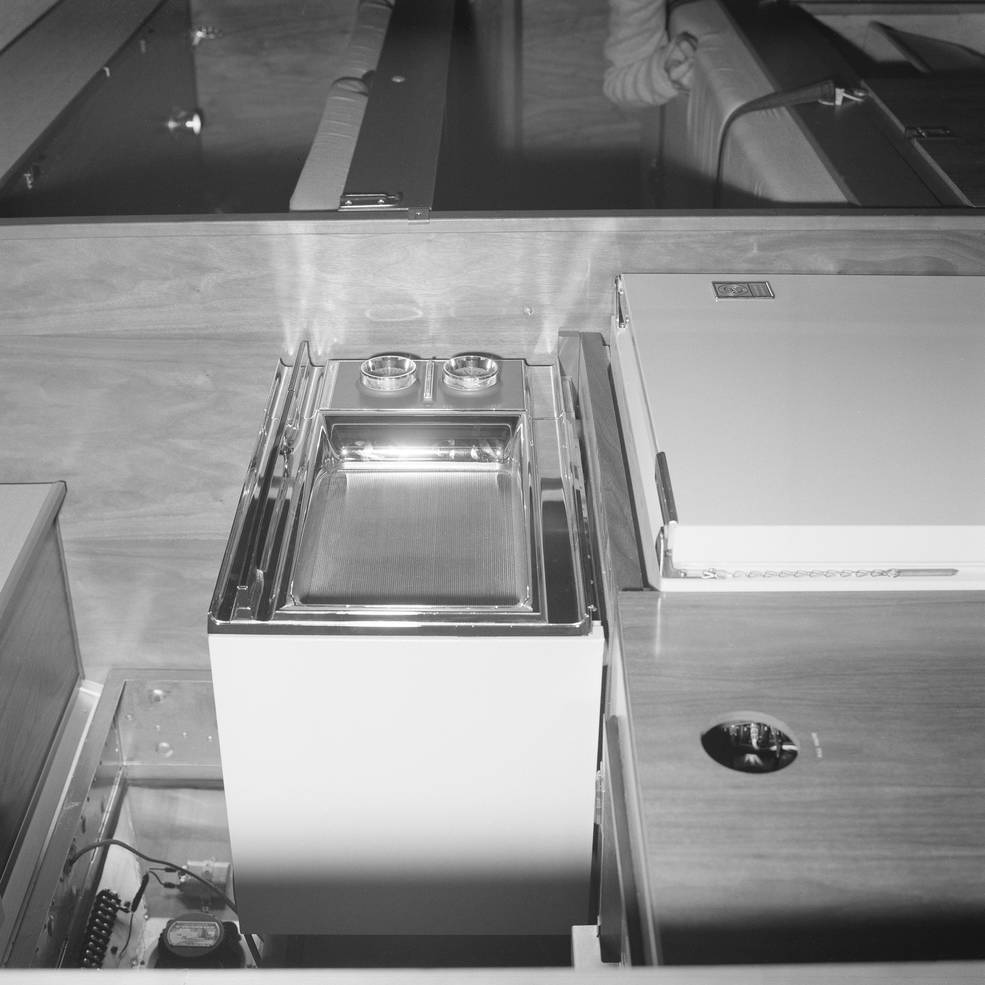
Interior views of the Mobile Quarantine Facility’s sleeping quarters, decontamination airlock, and microwave oven.
Containing a lounge, galley, sleeping quarters, and bathroom, the MQF received power from a diesel generator and batteries and could interface with ship and aircraft power systems. A decontamination airlock allowed for the transfer of samples and film to the outside for rapid return to Houston ahead of the MQF and crew. For meal preparation, the astronauts and their support team had a then-novel appliance available to them – a microwave oven.
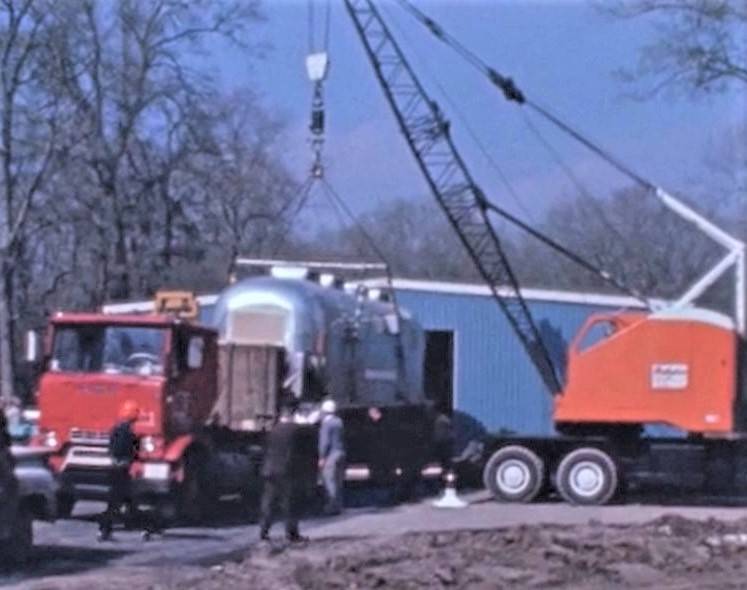
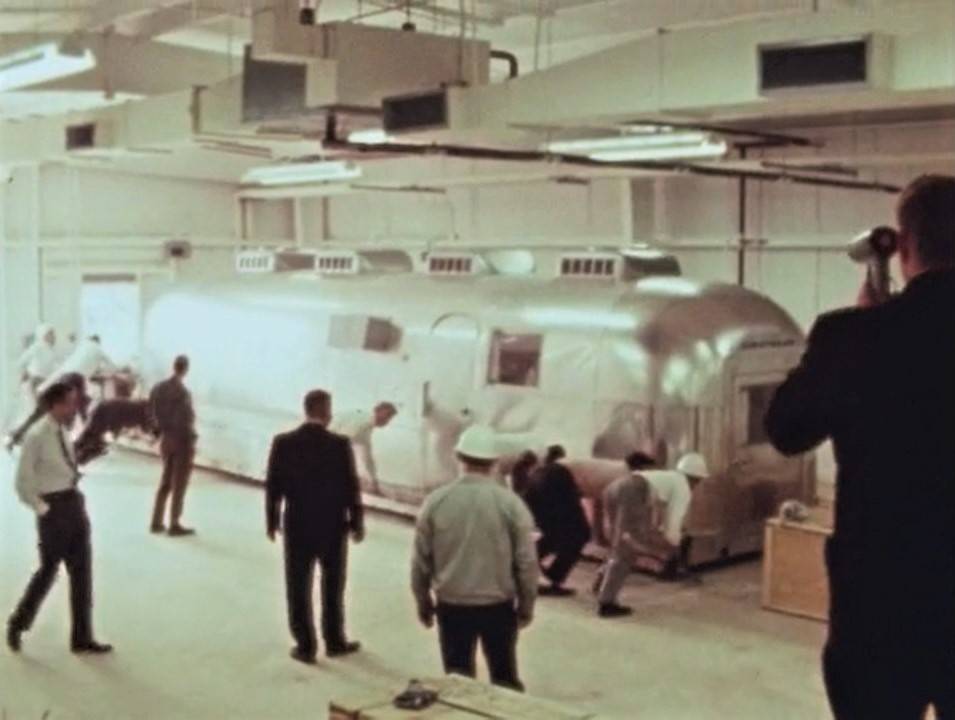
Left: Workers offload the first Mobile Quarantine Facility (MQF) outside Building 259 at the Manned Spacecraft Center, now NASA’s Johnson Space Center in Houston. Right: Workers inside Building 259 push the MQF to its storage place.
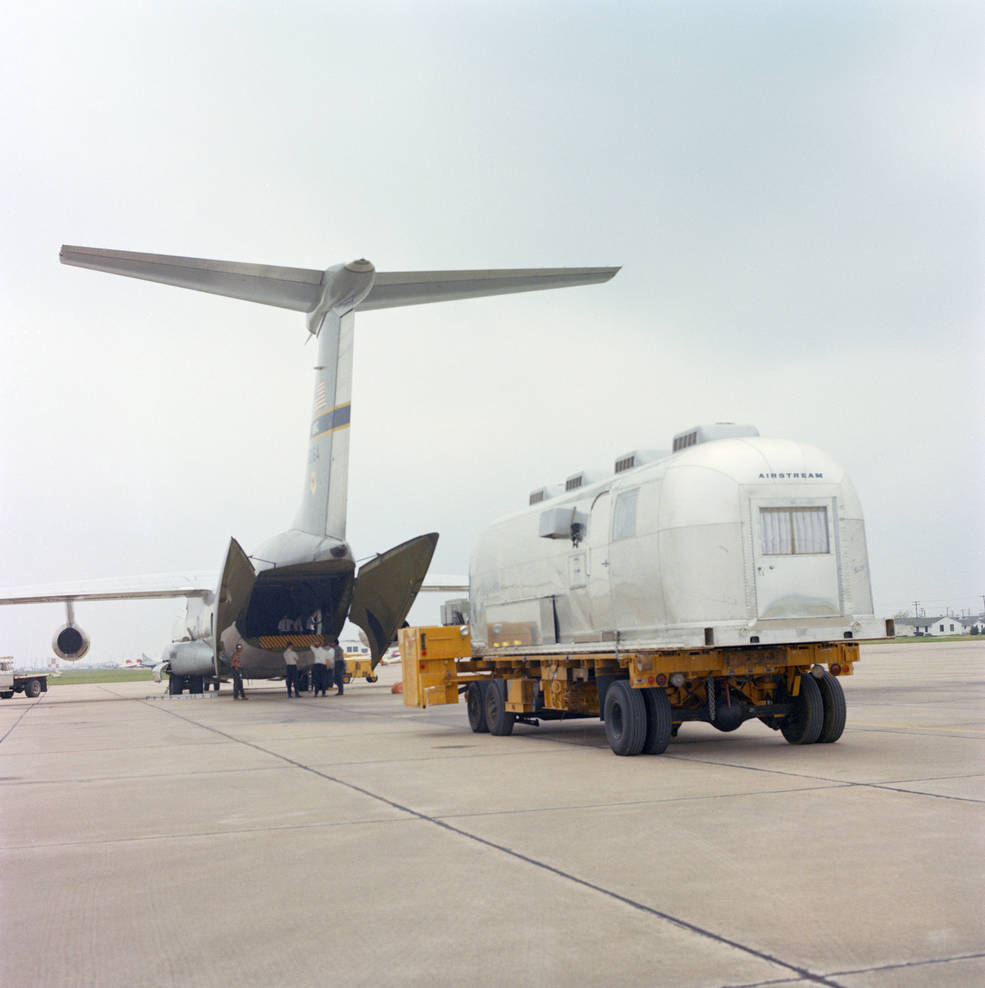
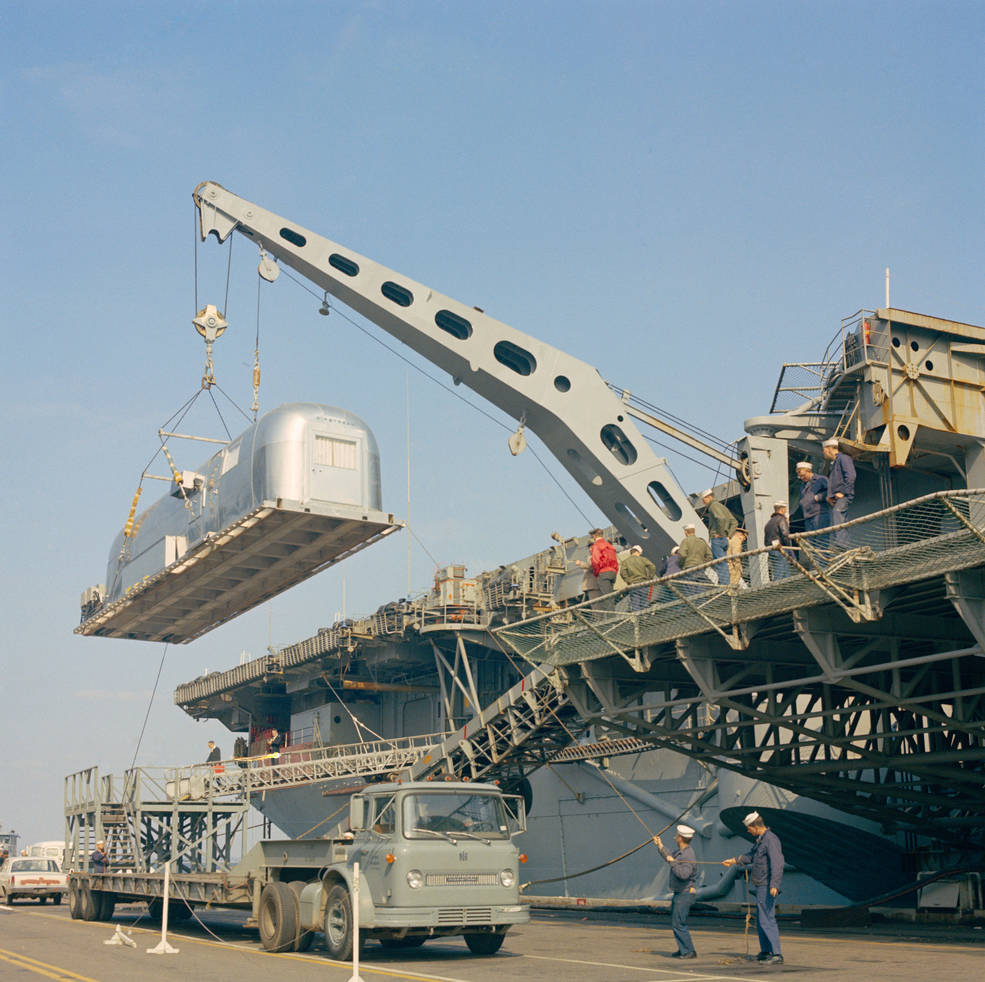
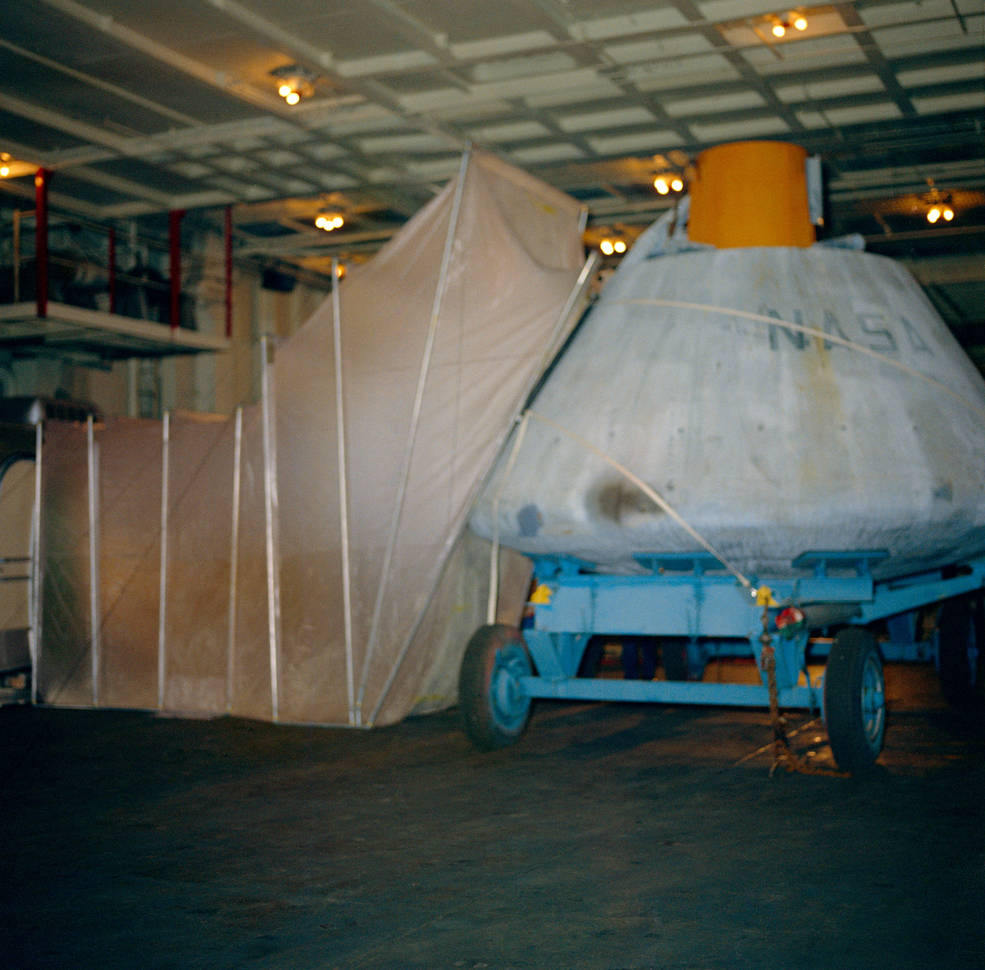
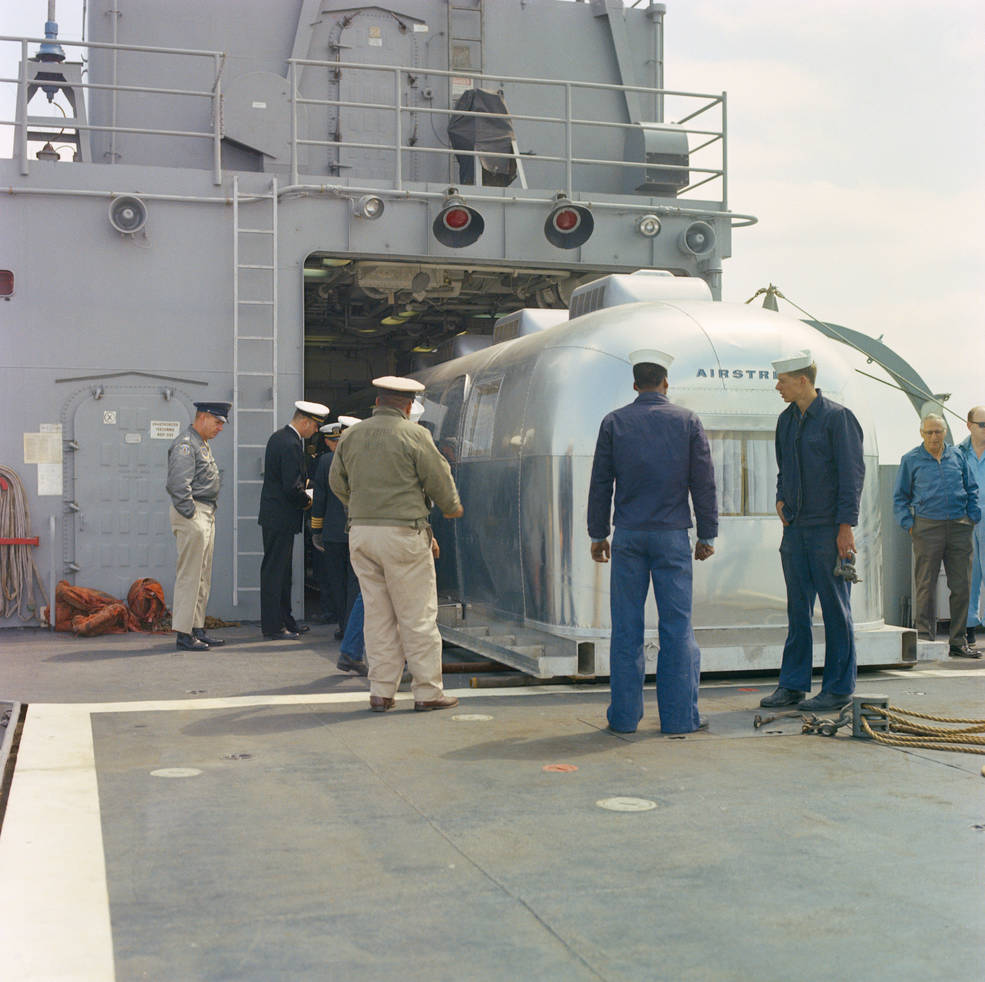
Left: Workers prepare to load the Mobile Quarantine Facility (MQF) aboard a C-141 Starlifter cargo aircraft at Ellington Air Force Base in Houston. Middle left: Sailors hoist the MQF onto the aircraft carrier U.S.S. Randolph in Norfolk, Virginia. Middle right: Below decks on the U.S.S. Randolph, workers have deployed the collapsible tunnel from the MQF, barely visible at left, to a mockup of an Apollo Command Module. Right: Sailors position the MQF aboard the destroyer U.S.S. Wood.
The first MQF, designated MQF-001, arrived by truck from Airstream’s facility in Ohio on March 6, 1968, and workers offloaded it into MSC’s Building 259 for post-delivery inspection and checkout. On March 29, workers trucked the MQF to nearby Ellington Air Force Base and placed it aboard a C-141 Starlifter cargo aircraft. After initial compatibility test flights, the C-141 departed for Norfolk, Virginia, where sailors lifted the MQF onto the aircraft carrier U.S.S. Randolph (CVS-15). While the Randolph stayed in port, engineers conducted compatibility tests with the MQF, including deploying the collapsible tunnel to a mockup Apollo CM. Sailors then transferred the MQF to the destroyer U.S.S. William W. Wood (DD-715), to test whether the MQF could be deployed on backup recovery ships. After its return to MSC, technicians rehearsed docking the MQF to the LRL, including a simulated crew transfer, while maintaining the biological isolation.
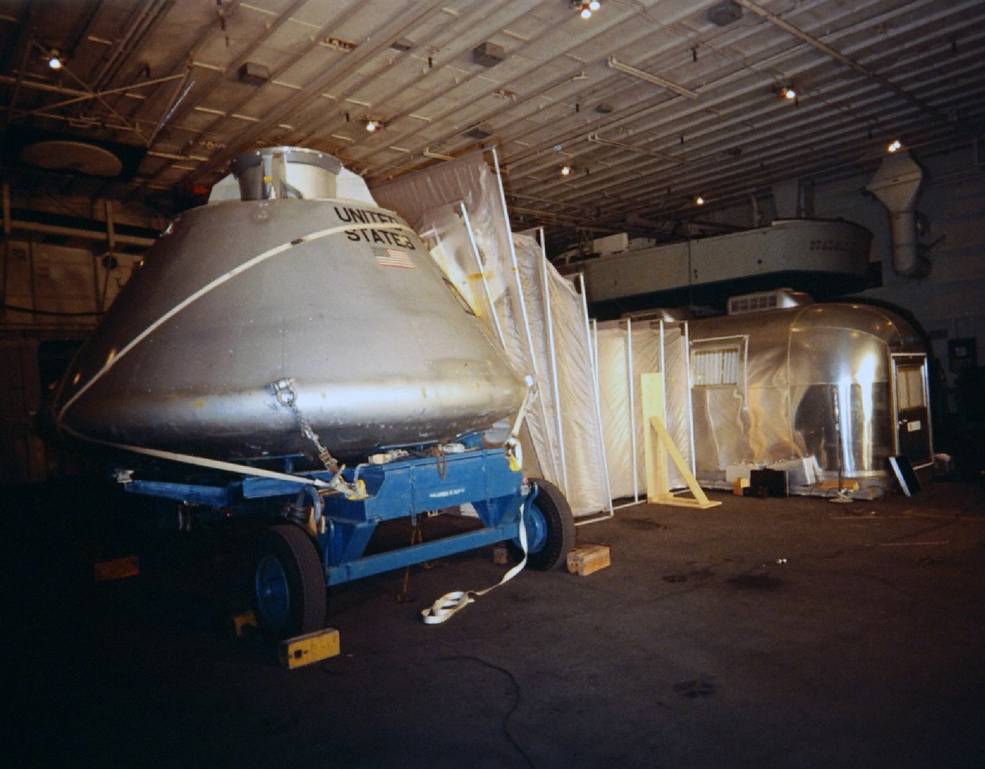
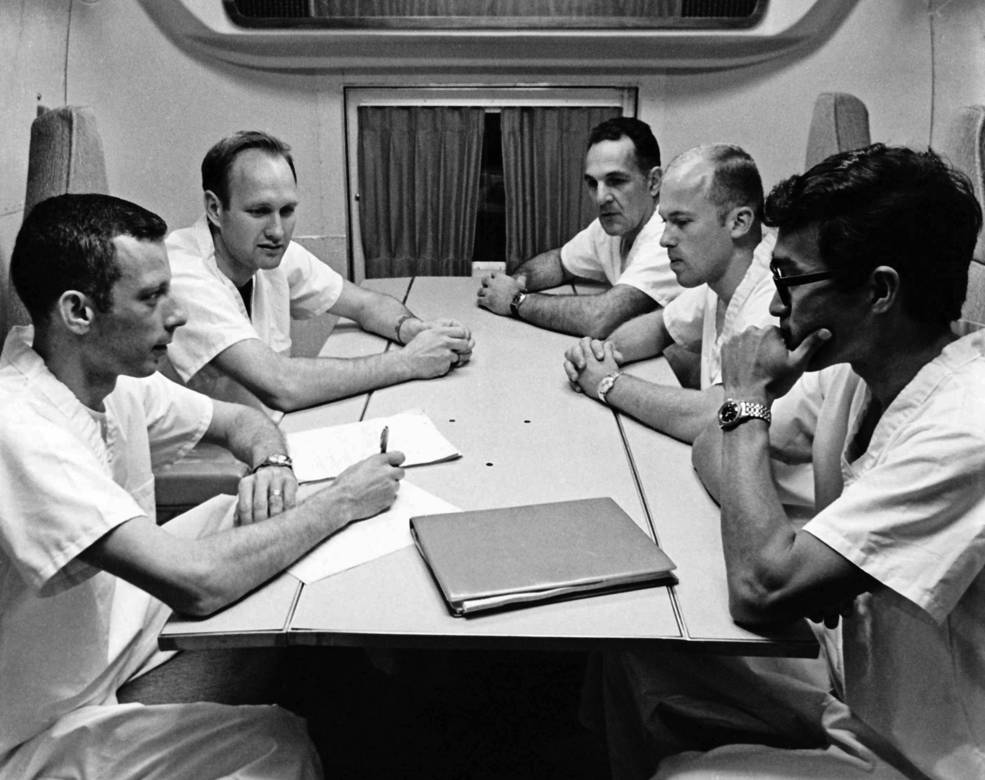
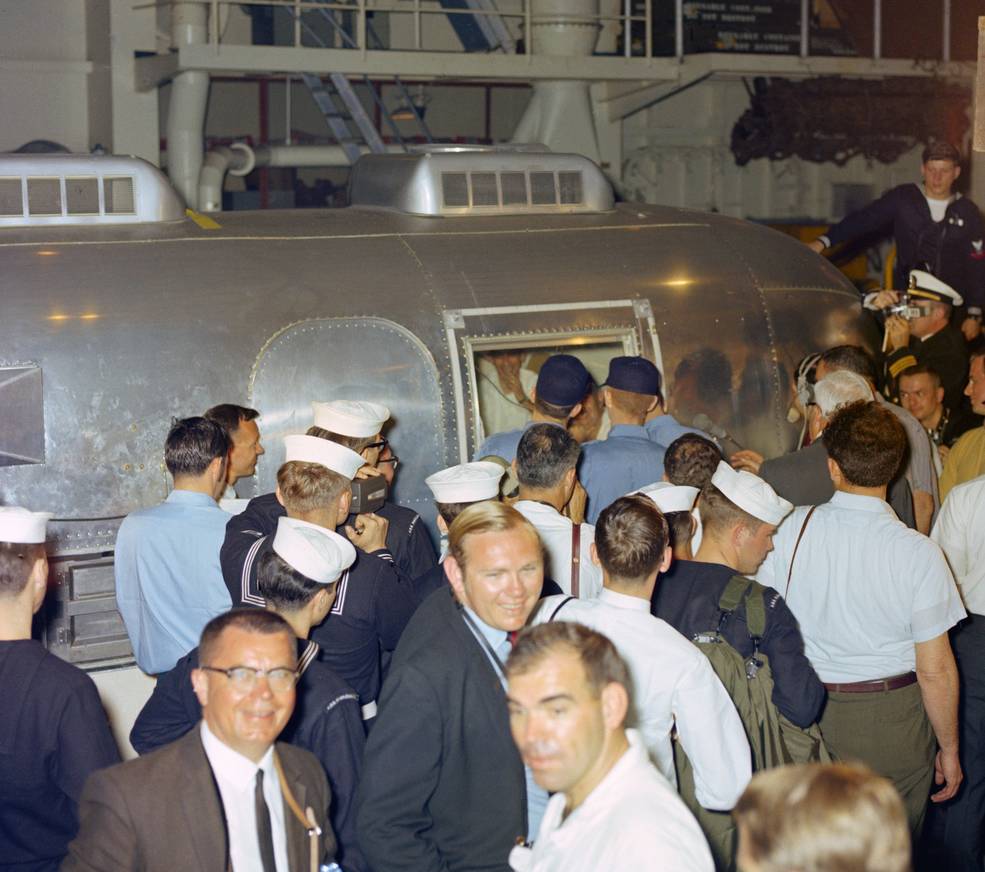
During the March 1969 dry run aboard the U.S.S. Guadalcanal. Left: Workers set up the collapsible tunnel between the Mobile Quarantine Facility (MQF) and a mockup Apollo Command Module. Middle: Dr. William Carpentier, left, engineer John K. Hirasaki, right, and the three surrogate astronauts inside the MQF during the dry run. Right: Apollo
9 astronauts, wearing blue baseball caps, peer into the MQF during the dry run.
Following the first sea trial, NASA requested several improvements to the MQF, returning the unit to Airstream, who delivered the upgraded unit to MSC on Oct. 28, 1968. NASA conducted a second set of sea trials from Norfolk in January 1969 aboard the helicopter carrier U.S.S. Guadalcanal (LPH-7) and the destroyer U.S.S. Myles C. Fox (DD-829). After this second sea trial, managers decided to locate MQFs only aboard prime recovery vessels. On Feb. 6, following its return to MSC, engineers placed MQF-001 in the Space Environment Simulation Laboratory’s Chamber A for three altitude tests to verify its ability to withstand a sudden depressurization while aboard an aircraft traveling at 35,000 feet. In March 1969, NASA conducted a dry run with MQF-001 coincident with the Apollo 9 mission and recovery operations aboard the U.S.S. Guadalcanal, the prime recovery ship for that flight. The dry run involved flight surgeon Dr. William Carpentier and engineer John K. Hirasaki, who would reprise their roles for the actual recovery of Apollo 11, and three test subjects as astronaut surrogates spending a total of 10 days inside the MQF. With some lessons learned from the dry run, managers declared the MQF ready to support actual operations. Airstream delivered the remaining three MQF units, incorporating all necessary upgrades, to MSC in May and June 1969, in time to support the Apollo 11 first Moon landing mission in July.
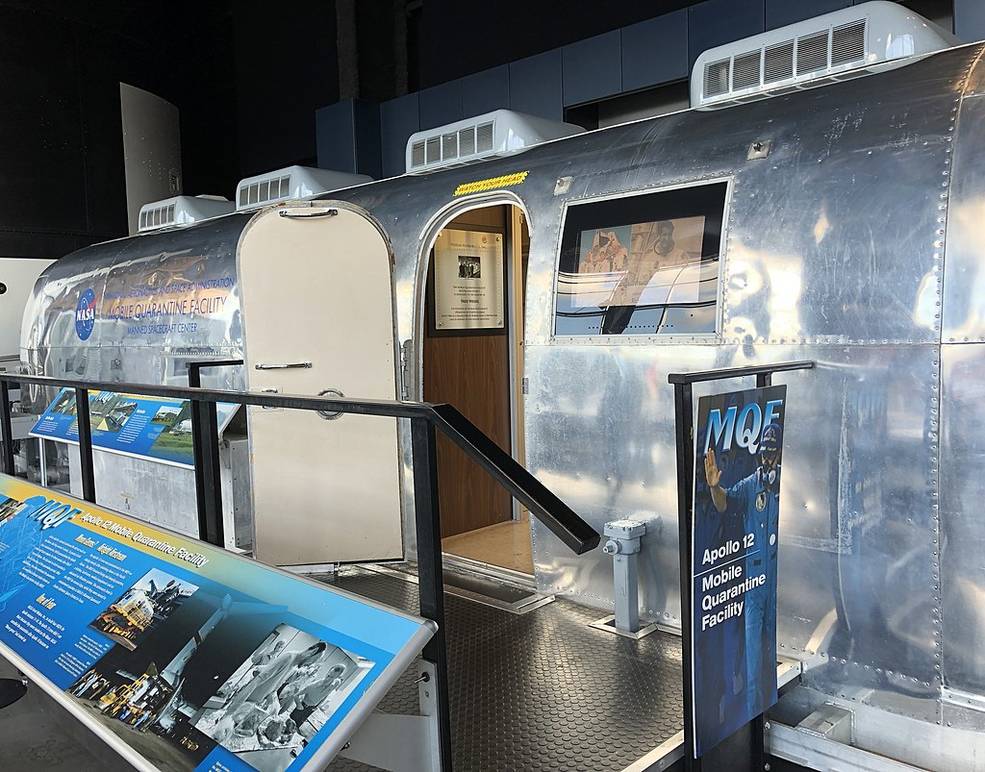
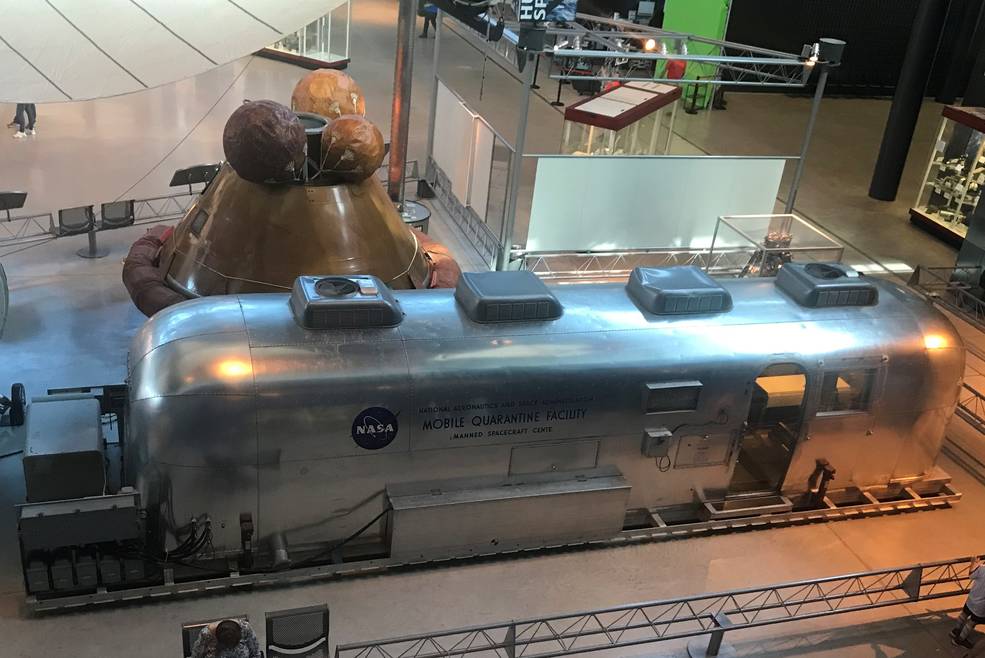
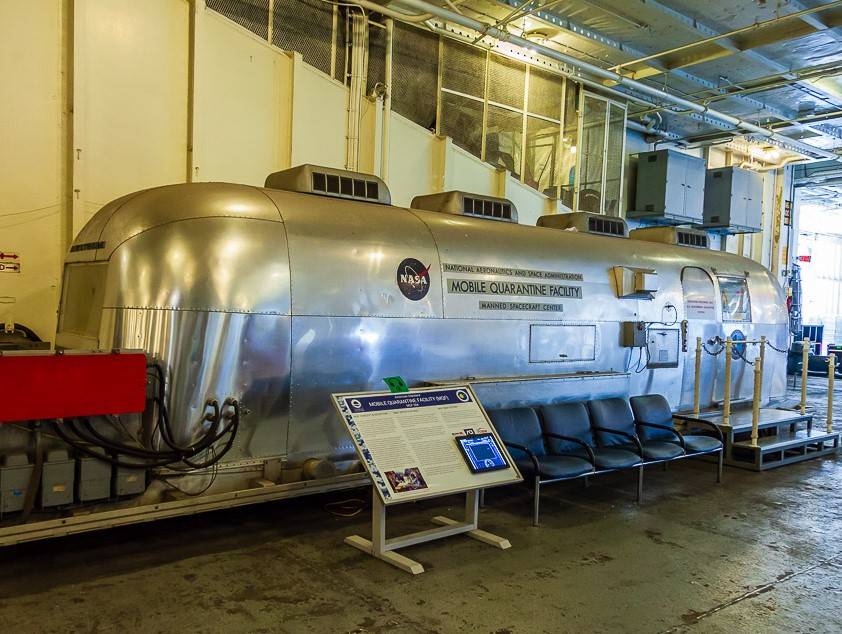
Left: MQF-002, used by the Apollo 12 crew, on display at the U.S. Space & Rocket Park in Huntsville, Alabama.
Image credit: courtesy U.S. Space & Rocket Park. Middle: Used by the Apollo 11 astronauts, MQF-003 on display at the Smithsonian Institution’s National Air and Space Museum Stephen F. Udvar-Hazy Center in Chantilly, Virginia. Image credit: courtesy NASA/J. Uri. Right: The Apollo 14 MQF, MQF-004, on display at the U.S.S. Hornet Sea, Air and Space Museum, Alameda, California. Image credit: courtesy U.S.S. Hornet Sea, Air and Space Museum.
NASA assigned MQF-001 as the prime MQF for Apollo 13, but since that flight didn’t land on the Moon, astronauts never used it for its intended purpose. After Apollo 14, NASA removed the requirement for postflight quarantine of astronauts since scientists had found no evidence of any lunar micro-organisms. In the 1970s, NASA transferred MQF-001 to the US Department of Agriculture for field work, but its current whereabouts are unknown. The other three MQFs saw service with other government agencies, and eventually ended up restored and in various museums. MQF-002 (used by the Apollo 12 crew) is at the U.S. Space & Rocket Park near NASA’s Marshall Space Flight Center in Huntsville, Alabama; MQF-003 (Apollo 11) can be viewed at the Smithsonian Institution’s National Air and Space Museum Stephen F. Udvar-Hazy Center in Chantilly, Virginia; and MQF-004 (Apollo 14) resides on board the U.S.S. Hornet Sea, Air and Space Museum in Alameda, California.
Enjoy reading the oral histories John K. Hirasaki and Brock R. “Randy” Stone, who spent time in the MQF with returning Apollo astronauts, conducted with the JSC History Office.


























